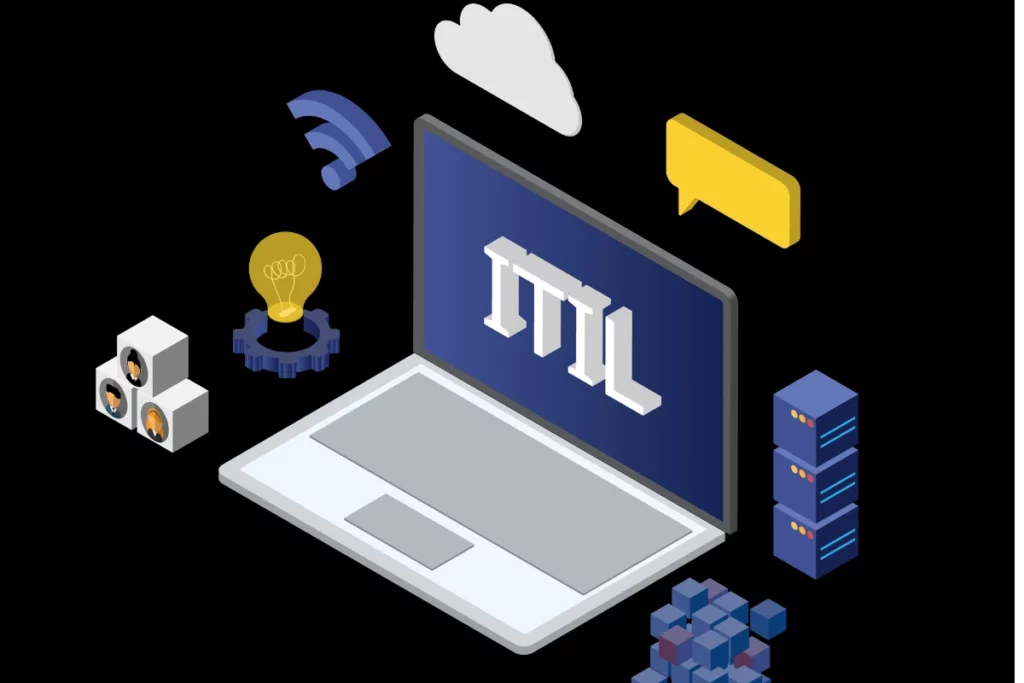Table of Contents
ToggleThe ITIL (Information Technology Infrastructure Library) framework has become an essential part of modern IT Service Management, offering a structured approach to managing IT services. It helps organizations streamline processes, enhance customer satisfaction, and optimize costs. However, implementing ITIL isn’t without its challenges. This article explores the most common obstacles organizations face in ITIL implementation and provides solutions to overcome them.
1. Resistance to Change
One of the most significant challenges in ITIL implementation is resistance to change. Employees and managers accustomed to existing processes may be reluctant to adopt new methods. Cultural resistance often stems from a fear of the unknown or a lack of understanding of the benefits ITIL brings.
Solution: Effective change management is key. Organizations should involve employees early in the process, providing training to help them understand the benefits of ITIL. Communicating small wins and demonstrating improvements can build momentum and gradually shift the culture toward embracing ITIL.

2. Lack of Management Support
ITIL implementation requires significant time, resources, and commitment. Without strong support from senior management, it’s difficult to secure the necessary resources and prioritize ITIL initiatives. Additionally, a lack of executive buy-in can create a barrier to achieving long-term success.
Solution: Demonstrate the ROI of ITIL by showcasing quick wins and using metrics to illustrate benefits. Encourage leaders to champion the initiative, which will help to build a top-down commitment to ITIL and create a supportive environment for change.

3. Insufficient Training and Expertise
Successful ITIL implementation requires trained personnel who understand the ITIL framework and can execute its processes effectively. Without the right skills and knowledge, employees may struggle to adapt, leading to suboptimal outcomes.
Solution: Investing in ITIL training and certifications (e.g., ITIL 4 Foundation Certification Training, Managing Professional) from accredited organizations like Axelos and PeopleCert can significantly improve expertise. Continuous learning ensures that teams remain updated on best practices and are equipped to handle ITIL processes efficiently.

4. Misalignment with Business Objectives
ITIL initiatives can fall short when they are not aligned with broader business goals. This misalignment often results from a one-size-fits-all approach that doesn’t consider the unique needs of the organization.
Solution: Tailor ITIL processes to the specific objectives of your organization. For example, use service value streams to map out how ITIL practices contribute to business outcomes. By aligning ITIL with strategic goals, you can ensure that it supports rather than hinders organizational success.

5. Complexity of Processes
ITIL’s comprehensive nature can be daunting, especially for smaller organizations or those with limited resources. The framework includes a range of detailed processes that can feel overwhelming and lead to confusion about where to start.
Solution: Begin by identifying the most critical ITIL processes for your organization and gradually build on them. Prioritize areas that deliver the most value, and focus on simplifying the implementation where possible. Streamlined and phased adoption helps prevent overload and makes the process more manageable.

6. Overemphasis on Process Over People
In some organizations, there is a tendency to focus too much on processes at the expense of the people executing them. This can lead to a rigid environment where employees feel disconnected and less motivated to engage with ITIL.
Solution: Adopt a people-centric approach to ITIL by fostering a culture of collaboration and open communication. Regularly solicit feedback from team members, and encourage them to share ideas for improvement. This creates a sense of ownership and helps to make ITIL processes more effective.

7. Inadequate Tools and Technology
Implementing ITIL without the appropriate tools can limit efficiency and hinder progress. ITIL processes, such as incident management and change management, require reliable ITSM (IT Service Management) tools to be successful.
Solution: Invest in ITSM tools that align with ITIL practices. There are numerous tools available, such as ServiceNow, BMC Remedy, and Cherwell, which are designed to support ITIL processes. These tools automate routine tasks, streamline workflows, and provide valuable insights into service performance.

8. Poor Communication and Silos
Effective ITIL implementation requires strong communication across departments. However, many organizations struggle with silos and poor communication channels, which can prevent ITIL practices from being fully integrated.
Solution: Establish clear communication channels and promote cross-functional collaboration. Hold regular meetings between IT and other departments to ensure alignment on ITIL processes. Consider implementing a shared platform for real-time collaboration to break down silos and encourage teamwork.

Overcoming ITIL Implementation Challenges
To achieve the full benefits of ITIL, it’s essential to address the challenges that can arise during implementation. With the right approach, including ongoing training and support from PeopleCert-certified programs, organizations can build the knowledge and skills needed to overcome obstacles. Tailoring ITIL practices to your organization’s specific needs and fostering a collaborative, people-centric culture will help ensure long-term success.
Conclusion
ITIL implementation can transform IT service delivery and drive better business outcomes. By understanding the common challenges, such as resistance to change, lack of management support, and insufficient training, organizations can take proactive steps to overcome them. With guidance from Axelos and PeopleCert, you can navigate the complexities of ITIL and unlock its full potential to improve service management in your organization.
